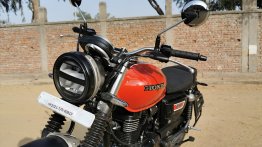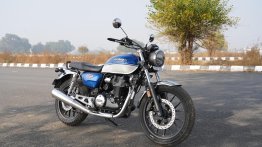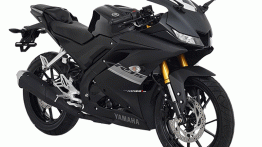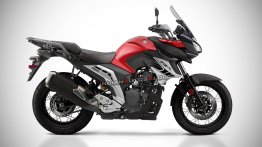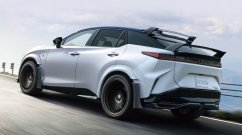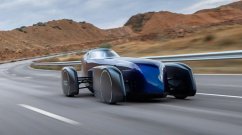Overview
Launched way back in 2008, the Yamaha YZF-R15 captured the hearts of hardcore track tamers and casual performance enthusiasts alike. It was the first 150 cc motorcycle in the Indian market to feature advanced features like liquid cooling, fully faired bodywork with the design drawing inspiration from its litre-class brother, the R1. The R15’s pizzazz and peppy performance allured many young customers to add one to their garage. Sure, the price went north of a lakh or so rupees, but it was an irresistibly affordable package that one could lay their hands on in the market.
There was a lull after the Version 2.0 for a long time, and rival brands surfaced with better propositions over the subsequent years. In a bid to fend off the competition, the Japanese auto giant finally brought the Yamaha YZF-R15 V3.0 to India at this year’s Auto Expo. So, is the v3.0 still relevant in the market that is performance-hungry yet value-centric? Read on to know the answer.
Design
The Yamaha YZF-R15 v3.0 follows the design philosophy of the new Yamaha YZF-R1. The twin LED headlamps are much sleeker, in tune with its elder brother. The faux air intake in-between nicely flows into the windscreen. The clip-on handlebars ensure a committed riding position, which is further augmented by the rear-set foot pegs. The rear portion of the bike is also reminiscent of the R1, with its sleek LED tail light, and the split bodywork flanking it on both sides.
The overall design looks more sophisticated and compact than the previous generation bike. The stubby exhaust system is reminiscent of the Yamaha R6. The quality feels good for its segment, but I wish the tank panels were a bit sturdier.
Features
The instrumentation of the Yamaha YZF-R15 v3.0 is an all-digital affair. Its horizontal layout is easy to read, and features a white shift light indicator as well. Apart from the regular trove of information, it also displays the gear position, instantaneous and average fuel consumption, average speed, and time. There’s a nice little welcome screen as well when you switch on the cluster. The display light has adjustable brightness, and the shift light can be adjusted based on the revs as well.
Another nifty feature the boffins at Yamaha have added is the USB port near the left tank shroud. This feature is optional. Unfortunately, they have not provided a phone holder. The customer will have to buy an aftermarket phone holder to make use of the USB port properly. Coming to the lighting systems, the indicators are of bulb type, while the head and tail lights are LED.
Performance
Yamaha has done a lot of work to make this bike go faster, burn fuel more efficiently. The engine is bigger than the previous generation model and features Variable Valve Actuation (VVA) technology. There are two intake valve cams. One is for lower rpms, and the other is for higher revs. VVA operates from 7,400 rpm onwards. Once the revs reach that limit, VVA increases the opening length of the fuel intake valve for better combustion efficiency. This is done by a solenoid which actuates the rocker arm controlling the valve.
Also Read: Yamaha YZF-R15 V2.0 vs Yamaha YZF-R15 V3.0 – Spec comparison
Yamaha says the benefit is a good balance between high-rpm horsepower and low-to-mid rpm torque. VVA has helped the bike in achieving 16.3% more power and 4.7% more mileage when compared to the previous generation motorcycle. On the racetrack, the power delivery felt gradual, and the engine is delightfully rev-happy. It really comes alive at 5,000 rpm and stays lively beyond that. Thanks to the VVA, the acceleration at higher rpms continues to be brisk. However, despite the presence of a counterbalancer, there are noticeable vibrations seeping into the handlebars and tank panels above 9,000 rpm. It is not much of a deal-breaker though.
The engine puts in a peak power of 19.3 PS at 10,000 rpm, and a maximum torque of 15 Nm at 8,500 rpm. The gearshifts from the 6-speed transmission are satisfyingly slick and precise. Thanks to the assist and slipper clutch, the clutch lever is lighter and the slipper clutch facilitates safer aggressive downshifting. The latter was quite handy at the Madras Motor Race Track, where I rode the motorcycle.
Handling
Simply said, this motorcycle encourages you to lean more, and the grip from the tyres are assuring as well. The test bikes came wearing Metzeler Sportec M5 Interact at the rear, which is worth INR 9,998 (MRP). The tyres obey without giving you any surprises. Interestingly, the front end does not come with a Metzeler even as an option. However, the MRF Nylogrip Zapper F-X1 does a commendable job keeping the rubber side down. Yamaha offers the MRF Nylogrip Zapper as stock for the rear.
Also Read: 2018 Yamaha YZF-R3 vs Benelli 302R – spec comparison
Considering the Indian road conditions, Yamaha opted to stick with telescopic fork at the front. It does make sense as upside down forks are really expensive and the performance gain is noticeable only by pro riders who are trying to shave off fractions around a track. The V3.0 comes with fatter 41 mm fork as compared to the 33 mm unit in the previous generation bike. The rear uses a link-type monoshock. The 20 mm shorter wheelbase, and the shorter, wider swingarm make the bike flickable, while maintaining chassis rigidity.
As far as braking performance goes, the feel is progressive, but I just wish it had a tad more bite. The front end uses a 282 mm disc and the rear comes with a 220 mm disc. Unfortunately, ABS is not present even as an option.
Verdict
Also Read: 2018 Honda CBR 250R vs Yamaha Fazer 25 – spec comparison
The bike is available in two colours: Racing Blue and Thunder Grey. Yamaha also provides optional accessories like Frame slider (INR 2,450), premium seat cover (INR 430), Tank Pad (INR 225), Skid Plate (INR 500) for better practicality. The optional Racing Kit includes the aforementioned rear Metzeler tyre, and a Daytona muffler worth INR 16,700. The service interval stands at a modest 3,000 km. To sum up, at INR 1.25 lakhs ex-showroom, Delhi, this little pocket rocket ticks the right boxes when it comes to features and performance.
The host of technical improvements in the Yamaha YZF-R15 v3.0 have made this bike a worthy successor to the previous generation bike. Though the Indian market seems to be moving towards bigger capacity (mid-size) segment, this motorcycle is still relevant; and will particularly plaster a smile across the face of enthusiasts who are looking for an affordable performance motorcycle.















































